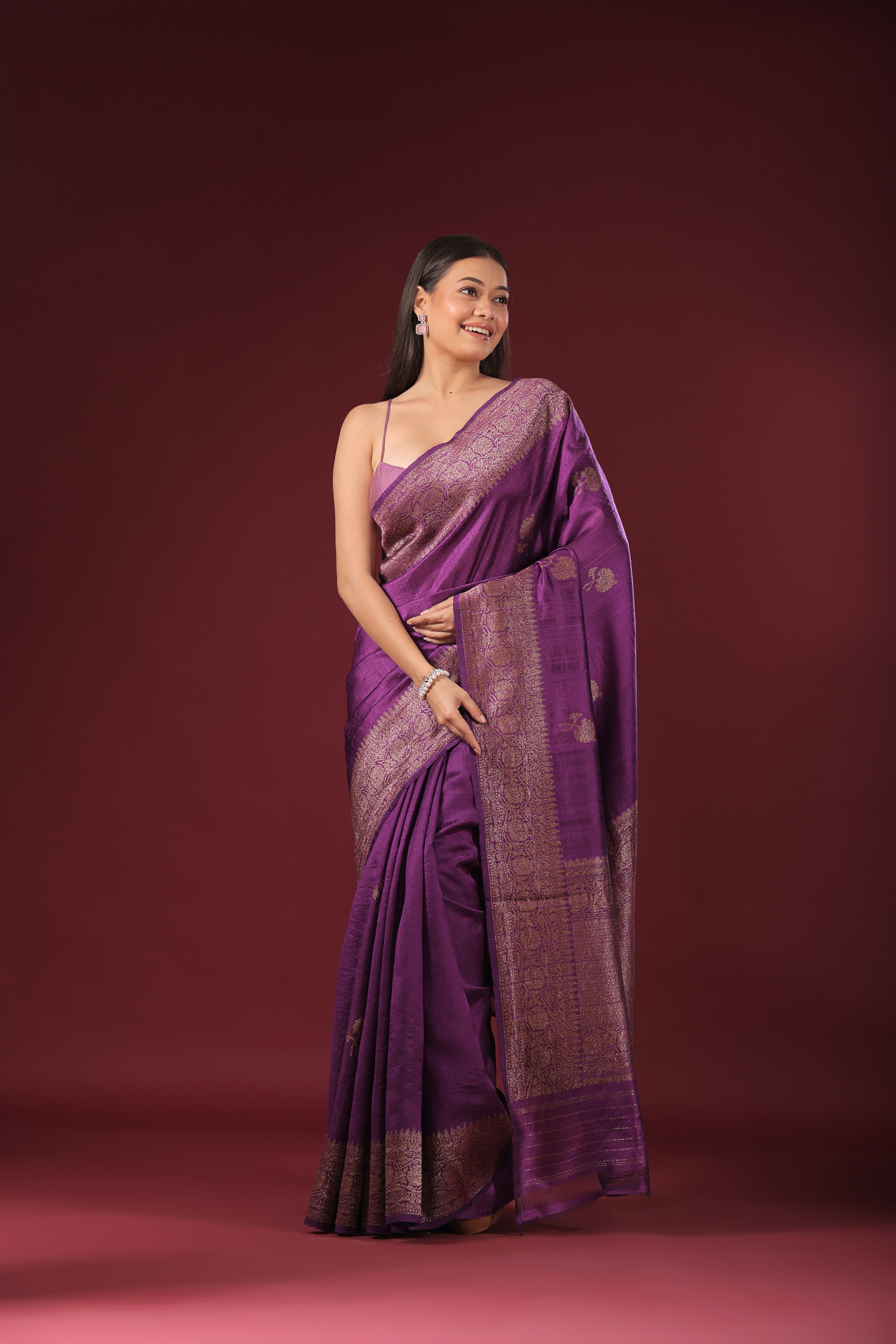A Raw Silk Banarasi saree is a type of Banarasi saree made from raw silk—a fabric that retains its natural texture and sheen, giving the saree a rich, luxurious look. These sarees are crafted in Varanasi (Banaras), India, which is renowned for its fine silk weaving tradition, particularly in the creation of Banarasi sarees. The combination of raw silk and traditional Banarasi weaving techniques makes these sarees highly prized for their elegance, texture, and intricate patterns.
Key Features of Raw Silk Banarasi Sarees:
-
Fabric:
-
Raw silk is the primary material used, which is silk that has not been processed to remove its natural sericin, the protein that gives silk its raw, slightly coarse texture. This texture gives the saree a beautiful matte finish, as opposed to the shiny appearance of processed silk.
- The raw silk used in Banarasi sarees is often handwoven, which adds to the unique charm and craftsmanship of each piece.
-
Weaving Technique:
-
Banarasi weaving is famous for its intricate brocade work, typically done with Zari (gold or silver thread). This creates elaborate designs like floral patterns, paisleys, mughal-inspired motifs, and sometimes even scenes from nature.
- The weaving process often involves kadhwa or jamdani weaving techniques, where the pattern is woven directly into the fabric, rather than being printed or embroidered on top.
-
Designs and Motifs:
- The designs on raw silk Banarasi sarees are incredibly intricate, ranging from floral motifs, paisleys, and buttas to geometric patterns. The patterns are often a mix of traditional Indian motifs and Mughal-inspired designs.
- The pallu (the part of the saree that drapes over the shoulder) is typically elaborately designed with dense brocade work, making it the focal point of the saree.
-
Colors:
- Raw Silk Banarasi sarees are available in a variety of rich, vibrant colors. Common shades include deep reds, maroons, golden hues, royal blues, emerald greens, and rich purples.
- The natural sheen of raw silk gives the saree a subtle glow, especially when paired with the metallic Zari threads, which enhance the visual appeal.
-
Texture and Feel:
- The raw silk fabric gives the saree a textured, slightly matte finish, making it different from the smooth, glossy look of polished silk. The texture of raw silk makes it more durable and gives it a rustic yet elegant appearance.
- The saree drapes beautifully, creating a graceful and structured look.
-
Occasions:
- A Raw Silk Banarasi saree is perfect for weddings, festivals, receptions, and other significant events where you want to make a grand statement.
- It is often worn by brides and women attending traditional ceremonies, as the fabric and intricate designs symbolize luxury and heritage.
-
Cultural Significance:
- Banarasi sarees, including those made from raw silk, are an essential part of Indian culture, particularly in regions like Uttar Pradesh and Bihar.
- The saree’s intricate craftsmanship represents the skill of the artisans of Varanasi and their longstanding tradition of silk weaving.
- The Geographical Indication (GI) status given to Banarasi sarees ensures that they are a product of traditional methods, preserving the rich heritage and artistry involved in their creation.
Conclusion:
A Raw Silk Banarasi saree is an exquisite blend of luxury, tradition, and craftsmanship. The use of raw silk gives the saree a rich texture and understated sheen, while the traditional Banarasi weaving techniques bring the fabric to life with intricate and beautiful patterns. These sarees are ideal for formal occasions, weddings, and celebrations, offering a sophisticated and timeless appeal. The combination of luxurious fabric, intricate designs, and cultural significance makes the Raw Silk Banarasi saree a prized addition to any wardrobe.











